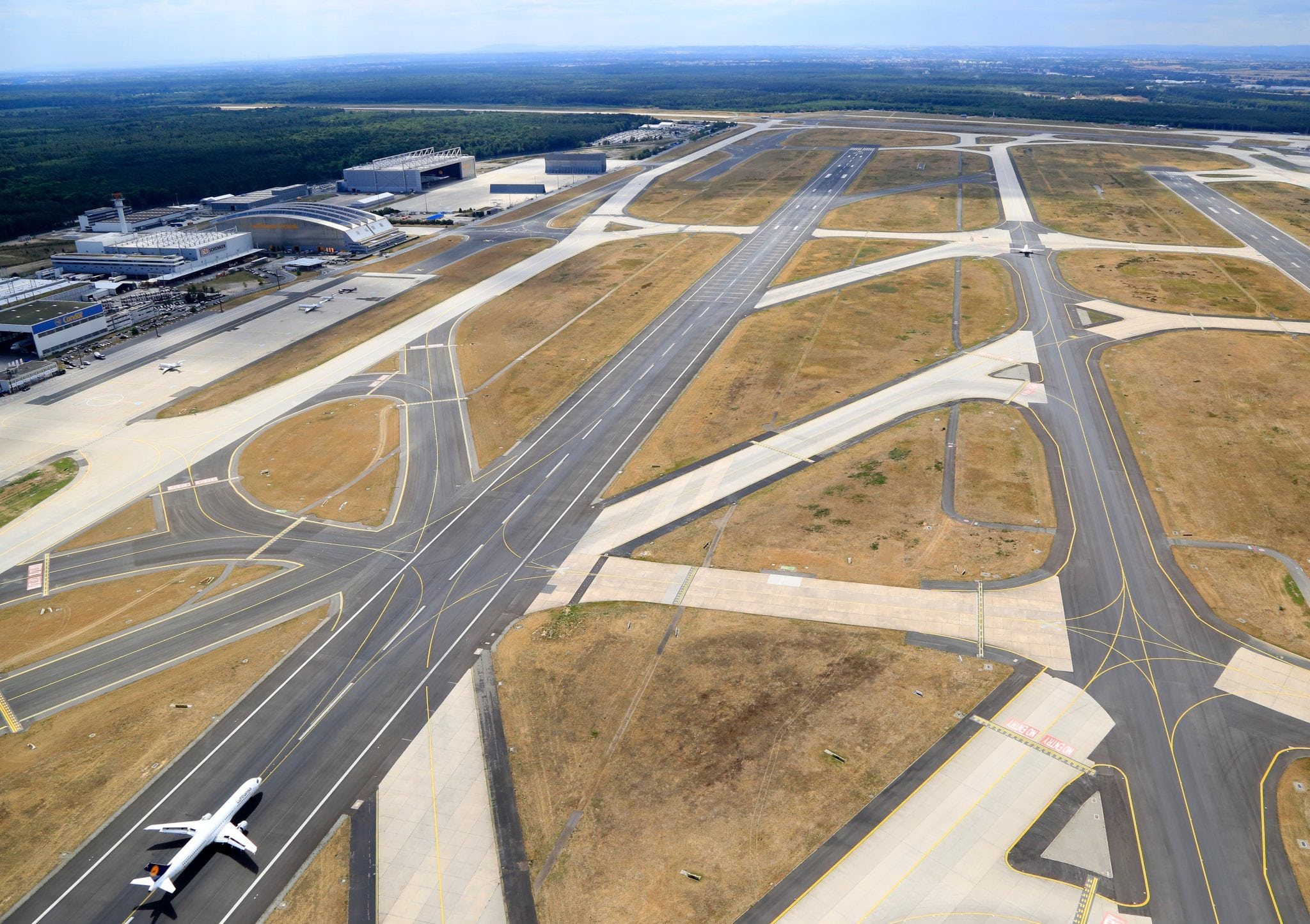[Avionics Today 08-03-2016] The Single European Sky ATM Research Joint Undertaking (SESAR JU) has released a final report providing recommendations for a path forward to support the widespread deployment of Controller to Pilot Data Link Communications (CPDLC) flight operations in Europe. The 184-page report provides recommendations based on investigations into the CPDLC infrastructure performance issues that emerged in 2014 and lead to the delay of the CPDLC airspace mandate from 2015 to 2020. The report featured analysis of more than 400 revenue and measurement flights, 3 million air-to-ground exchanges, 700 hours of simulation representing 350,000 flight hours, and stress testing of common avionics configurations requiring about 50 days of cumulated live sessions. Here, we provide a summary of the avionics-related findings of the report.

Frankfurt Airport’s Runway South. Frankfurt Airport featured some of the ground stations that were investigated by researchers participating in the ELSA study. Photo: Frankfurt Airport.
Under Regulation (EC) No. 29/2009, airspace users in Europe flying above 28,500 feet were originally required to equip their aircraft with Very High Frequency (VHF) Mode 2 CPDLC avionics by Feb. 5, 2015. In 2015, though, the European Aviation Safety Agency (EASA) determined that the Aeronautical Telecommunication Network (ATN) ground infrastructure was too susceptible to radio interference and disconnection issues making it unsafe to operate CPDLC on commercial flights within normal European airspace operations. That change lead to SESAR JU’s Enhanced Large Scale ATN deployment (ELSA) consortium perming the VDL Mode 2 Measurement, Analysis and Simulation Campaign, also known as the ELSA project.
According to the recently released ELSA report, the greatest problem the consortium had to investigate was the cause of the high rate of Provider Aborts (PA) encountered by ATN Baseline 1 (B1), when it was originally implemented to support CPDLC operations. ELSA consortium’s report defines Provider Abort (PA) as the technical term used to characterize ATN disconnections generated at the communication network and link level. The specifications of the system require a PA rate of one disconnection or less per 100 hours to meet the expected level of performance.
Effectively, the ELSA report advocates for the maximization of the operational period of VDL Mode 2, with a staggered shift to deploying a multi-frequency environment in Europe to support CPDLC operations.
The aim of the avionics performance-related aspect of the research was to simulate an environment representative of future European airspace operations. Specifically, researchers were evaluating the ability of data link management units and VDR units to maintain the end-to-end connection with the ground network in a commercial air traffic environment.
One of the most important avionics-related findings in the report was the identification of “best in class” avionics configurations, or the set of hardware necessary to comply with EASA’s ATN and VDL2 performance specifications. Airbus, Honeywell Aerospace and Rockwell Collins were the main suppliers of avionics determined to be “best in class” data link components.
“A detailed study was conducted by avionics partners in order to analyze the main reasons behind aircraft handovers. In congested areas (covered by many VGSs), or areas where there was a lack of coverage, the number of handovers increased dramatically for all avionics configurations. In addition, the interoperability tests identified differences between avionics implementations, which led to various levels of performance in maintaining connectivity. These differences of implementation are driven by the flexibility of the guidelines defined in the current standards,” the ELSA report notes.
The study used test equipment to simulate 230 hours of cumulated executions, corresponding to 116,000 hours of virtual flights and nearly 33 million exchanged messages. It found that the “best in class” avionics include the following:
“Best in class” Data Link Management Units
Airbus:
• FANS B+ Air Traffic Services Unit (ATSU) CSB8.3.
Honeywell:
• MkII+ Communications Management Unit (CMU) upgrade from -501 and -521 to -522,
• Primus Epic Communications Management Function (CMF) upgrade to Block 3.xx or later,
• Boeing 787 CMF upgrade to BPV3,
• Boeing 777 CMF upgrade to BPv17A BLE.
Rockwell Collins:
• CMU-900 upgrade to CMU Core software 815-5679-505 (refer to CMU-900 Service Information Letter 15-1).
“Best in class” Voice Data Receiver (VDR) Units
Honeywell:
• RTA-50D PN 965-1696-0F1,
• RTA-44D PN 064-50000-2052 or with service bulletin SB23-1570 installed,
• Primus Epic avionics fitted with mod D or greater for the VDR element.
Rockwell Collins:
• VHF-920: P/N 822-1250-002w/SB16 or 822-1250-020w/SB17,
• VHF-2100: P/N 822-1287-101/180w/SB7 or 822-1287-121/141,
• VHF-2200 P/N 822-2763-020 or VHF-2200 P/N 822-2763-050.
Eurocontrol reports that currently about 40 percent of daily flights occurring in European airspace are ATN CPDLC-equipped. About 60 percent of the Airbus, Honeywell or Rockwell Collins-equipped aircraft are in need of the recommended upgrades indicated above. As of today, more than 4,500 VDL2-equipped aircraft establish ATN connectivity with ground systems, while very few of them actually make operational use of CPDLC, the ELSA report confirmed.
Finally, the report produced a number of recommendations to specifically address the ground network, avionics, standardization, network implementation and oversight.
“Best in class avionics have demonstrated that they can provide less than four PAs per [100 hour] 100h CPDLC usage, compared to an average rate of 20 PAs per 100h of CPDLC as measured during ELSA project, without other ELSA recommendations being deployed,” the ELSA report says.